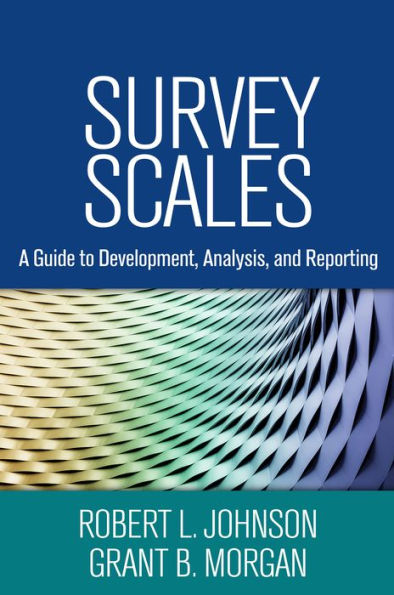Survey Scales: A Guide to Development, Analysis, and Reporting
Synthesizing the literature from the survey and measurement fields, this book explains how to develop closed-response survey scales that will accurately capture such constructs as attitudes, beliefs, or behaviors. It provides guidelines to help applied researchers or graduate students review existing scales for possible adoption or adaptation in a study; create their own conceptual framework for a scale; write checklists, true-false variations, and Likert-style items; design response scales; examine validity and reliability; conduct a factor analysis; and document the instrument development and its technical quality. Advice is given on constructing tables and graphs to report survey scale results. Concepts and procedures are illustrated with "Not This/But This" examples from multiple disciplines. User-Friendly Features *End-of-chapter exercises with sample solutions, plus annotated suggestions for further reading. *"Not This/But This" examples of poorly written and strong survey items. *Chapter-opening overviews and within-chapter summaries. *Glossary of key concepts. *Appendix with examples of parametric and nonparametric procedures for group comparisons.
"1123236062"
Survey Scales: A Guide to Development, Analysis, and Reporting
Synthesizing the literature from the survey and measurement fields, this book explains how to develop closed-response survey scales that will accurately capture such constructs as attitudes, beliefs, or behaviors. It provides guidelines to help applied researchers or graduate students review existing scales for possible adoption or adaptation in a study; create their own conceptual framework for a scale; write checklists, true-false variations, and Likert-style items; design response scales; examine validity and reliability; conduct a factor analysis; and document the instrument development and its technical quality. Advice is given on constructing tables and graphs to report survey scale results. Concepts and procedures are illustrated with "Not This/But This" examples from multiple disciplines. User-Friendly Features *End-of-chapter exercises with sample solutions, plus annotated suggestions for further reading. *"Not This/But This" examples of poorly written and strong survey items. *Chapter-opening overviews and within-chapter summaries. *Glossary of key concepts. *Appendix with examples of parametric and nonparametric procedures for group comparisons.
49.0
In Stock
5
1

Survey Scales: A Guide to Development, Analysis, and Reporting
269
Survey Scales: A Guide to Development, Analysis, and Reporting
269Paperback(Reprint)
$49.00
49.0
In Stock

Product Details
| ISBN-13: | 9781462526963 |
|---|---|
| Publisher: | Guilford Publications, Inc. |
| Publication date: | 08/03/2016 |
| Edition description: | Reprint |
| Pages: | 269 |
| Product dimensions: | 6.10(w) x 9.20(h) x 0.60(d) |
About the Author
From the B&N Reads Blog
